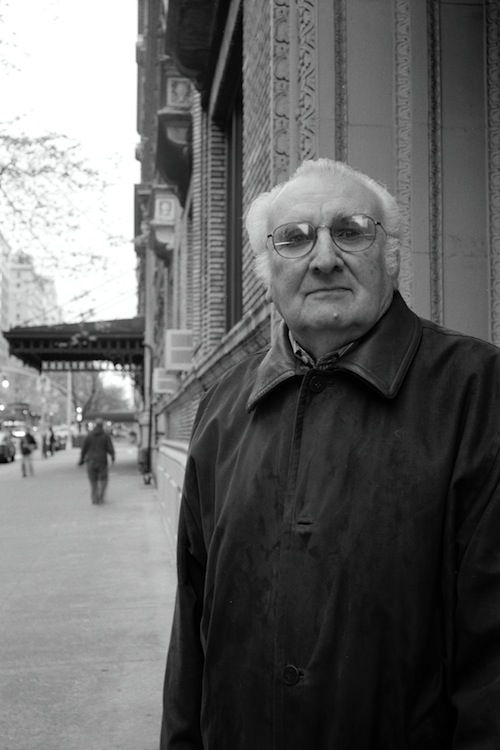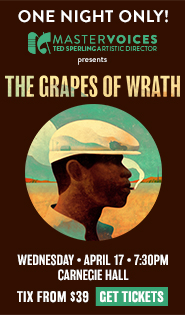ICE celebrates Davidovsky’s birthday with past masterworks and a world premiere
The concert by the International Contemporary Ensemble (ICE) at the Americas Society could not be timed exactly for Mario Davidovksy’s 81st birthday, which fell on March 4. Yet Friday night’s event was a celebration of the composer’s work nonetheless, exclusively featuring the composer’s work. And as a gift to the standing room crown, there was a world premiere.
Davidovksy’s style recalls the title of Kandinsky’s treatise Point and Line to Plane. Not that his music sounds how Kandinsky’s paintings look, but that he emphasizes the horizontal and vertical arrangement of notes through time.
As redundant and tautological as that may seem, it is an important description and distinction. Davidovsky’s roots are in the second generation of atonal composers, like Milton Babbitt—with whom Davidovsky studied—with concerns different than trying to preserve functional harmony. His music carves up space and time with systematized logic.
Yet there’s nothing dry or cold about it—nor is the music strictly atonal, and one hears the classical and romantic soil in which his music grows. Davidovsky has a lyrical sense and an ear for the right moment. He also works with electronic music, and that genre, which is about time and timbre, has enhanced his music.
His most well-known work is probably his Synchronisms, a series of pieces for acoustic instruments played along with electronic audio, and Friday night violinist David Bowlin played one of these, Synchronisms No. 9. This is a great, cadenza-like work, that sets a violin part that is full of romantic gestures and flourishes against electronic accompaniment that alternates between working with and against the instrument.
The balance between acoustic and electric sounds was ideal. The first moment when the two mediums meet was so perfectly in tune that it took a moment to realize that Bowlin was not playing a double-stop. The consonant meetings between violin and audio were exquisite, and after each the audio track chases the violin, tries to knock it off course. Bowlin’s playing was extraordinarily precise and quite beautiful.
All the playing was wonderful, putting a premium on clarity and exactitude, with the intensity coming through focus rather than volume or attack. The ICE musicians were attuned to how Davidovsky uses spaces to allow even the most obdurate music to communicate. His work came off a little like an extended Miles Davis solo, each musical statement set off by enough space so that the each listener could find their own way in.
There is also so much appreciation for the enduring pleasures of the classical tradition in this music. His Romancero that opened the program eschews post-Pierrot Lunaire clichés for an articulate, highly musical and expressive setting of four anonymous, Romantic, Spanish poems. The text and music combines earthiness and abstraction, richly conveyed by soprano Tony Arnold’s shining, objective tone, and the sublime obliggatos played by violinist Erik Carlson and flutist Alice Teyssier.
The earliest work on the program was Chacona, a piano trio from 1971. The title indicates the form, but rather than working its way through harmonic and melodic variations, the music explores changes in pace and duration. Violinist Mirando Cuckson, cellist Michael Nicolas, and pianist Cory Smythe played the piece with exhilaratingly exact intonation, and an emphasis on quiet dynamics that brought out intriguing shades of Morton Feldman, especially expressed through Smythe’s carefully placed scalar gestures.
The Americas Society, ICE, a grant from Chamber Music America, and the encouragement of Americas Society music program director Sebastian Zubieta, brought the new piece, Divertimento for 8 — Ambiguous Symmetries, to fruition. Amazingly, this is Davidovsky’s first work after a five-year hiatus from composing—no dust or rust on him. It is also a superb work, written with complete command of craft and form.
The Divertimento alternates two complementary ideas; subdued and beautiful minor key passages and agitated, atonal ones. Scored for a medium-size ensemble of strings, winds and percussion, and conducted by David Fulmer—one of the best new music leaders around—it is Davidovsky at this finest. One can discern how it constructs its own form as time and notes accumulate, which is a fluid and utterly engrossing experience. Identifiable ideas fall into place like building blocks; the dialogue between the two fundamental ideas creates a dramatic logic; a recurring ten note motif gives direction; a short, strong and utterly romantic climax satisfies. The piece ends with a quiet tune in the bass, leaving one almost desperate to hear it again.




Posted Mar 18, 2015 at 8:05 pm by Jill Witten
So sorry I missed the concert!